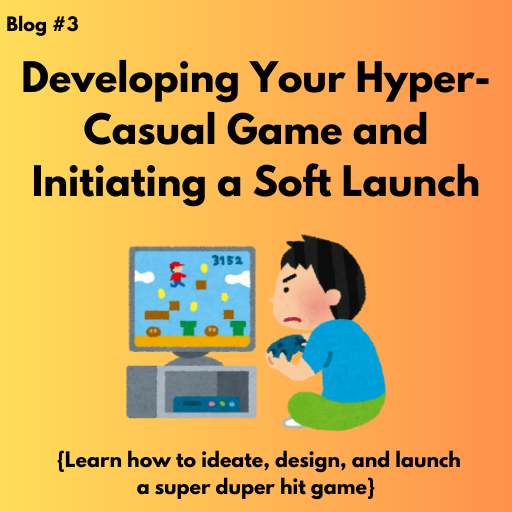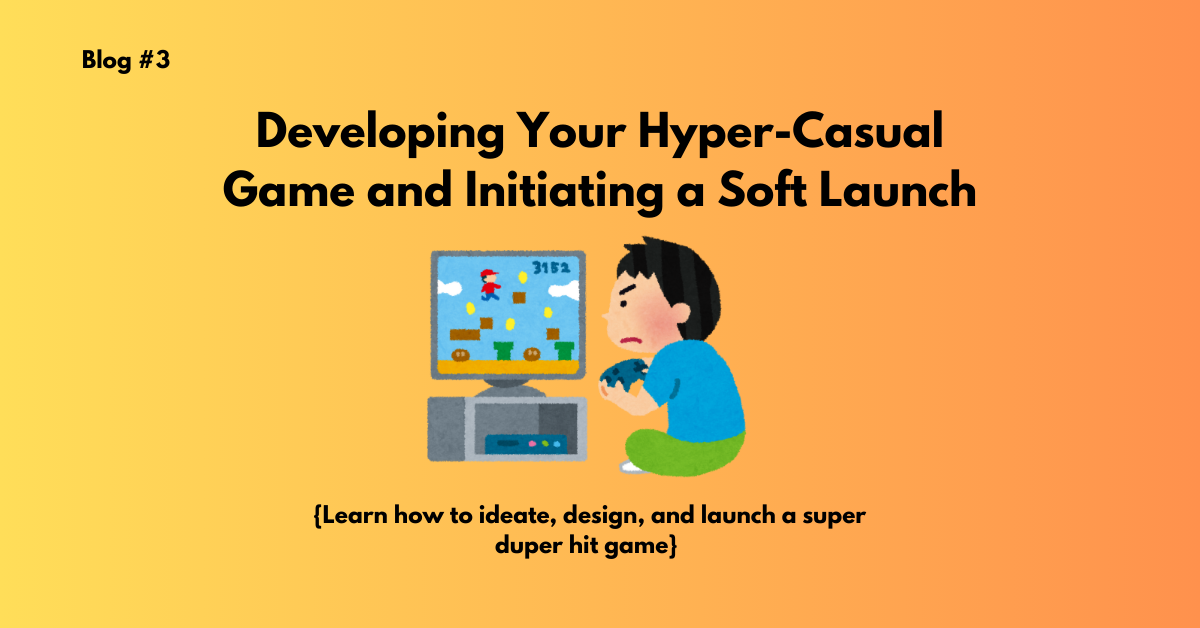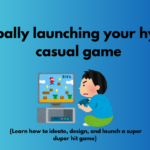
By now, you know how to create a new hyper-casual game concept and run marketability tests using the concept prototype. Let’s say you’ve achieved a nice, low CPI from your Facebook campaign. Now it’s time to get serious. Start building out your game by adding depth, focusing on metrics like playtime and retention, and preparing for a soft launch.
Keep three important points in mind once you see your concept has marketability potential:
1. Target Audience: Your target audience in hyper-casual is broad. You’re not focusing on a niche of hardcore gamers—you’re aiming at everyone. Remember, without scale, games in this genre struggle to succeed. Keep your game simple, clear, and easy to pick up and play for all audiences.
2. Consistency: Maintain a consistent story and theme through progression layers and the metagame. Pay attention to details, as this will help strengthen the connection between the player and the game.
3. Level Design: Focus on your level design. Aim to evoke the right feelings and emotions from players in your levels. In the next few minutes, we’ll dive deeper into the kinds of emotions and motivations you should concentrate on.
Understand Your Sub-Genre and Player Psychology
To design engaging levels that increase playtime and retention rates, understand the psychology of your sub-genre. What motivates players’ feelings? What gameplay experience keeps them coming back?
Here are a few examples of different sub-genres in the hyper-casual category and their typical user motivations:
– **ASMR**: Players seek escapism. They want to relax, enjoy an auto-pilot experience that requires minimal effort, and receive instant and easy rewards.
– **Puzzle**: Users appreciate easy challenges that involve thinking, solving puzzles, finding patterns, and being creative. They are driven by the satisfaction of winning.
– **I-O Games**: I-O games emphasize winning. Users are motivated by competitiveness and want a high chance of success.
– **Action**: Users crave excitement through fast-paced levels where they can assert their power and superiority. They enjoy an easy and satisfying experience.
To inspire features and level designs, download some of the most popular games in your category and draw inspiration from them.
Optimize Based on Data
As you add levels, characters, mechanics, and depth to your game, closely monitor in-game metrics that reflect user behavior.
Metrics such as retention, playtime, and user drop-off rates at each level will confirm whether your game is on the right track for a soft launch.
Conduct A/B tests for every aspect of your game, from characters to creatives, ensuring you don’t miss opportunities to boost your game’s performance.
At this stage, balance perfection with production speed. In some instances, take your time, run A/B tests, and closely monitor all data. In other cases, rely on experience and instinct to make decisions.
The hyper-casual market moves quickly—if you don’t act first, someone else might publish a game with the same concept, or the trend your concept relies on could lose its virality.
Do your best to optimize and maximize your game’s LTV potential, but always remain practical about it.
Once you build out your game, it’s time for a soft launch.
Soft Launch: Optimizing User Acquisition
The soft launch stage offers a controlled environment for testing and optimizing, helping you avoid wasting ad spending while shortening the learning curve before the big launch.
During the soft launch, identify your best-performing creatives across various UA channels—this step is crucial before investing time and money in a global launch, where you’ll push your game live across UA channels and ramp up your marketing spend.
Your goal when launching your game is to maximize profit by optimizing your UA efforts and maximizing LTV. Start with your user acquisition strategy.
Not every UA channel is the same; they each have different audiences with unique demographics and behaviors. So, adapt your strategy for each network and channel.
Bid granularly based on ROI predictions on each platform, and make decisions based on the data and technology you’re using. Keep testing and optimizing creatives, applying your learnings to each channel. During the soft launch, determine which types of creatives perform best on different networks.
Tips to Improve Your Creatives During Soft Launch
Here are some tips to enhance your creatives, making them simpler, clearer, and more appealing to encourage users to try your game:
– Ensure all key elements of your creatives are clear and large enough across platforms and devices.
– Create contrast between the background and characters using simple color associations—for example, red signifies danger (enemies, obstacles), while green indicates safety (direction signs, your team).
– Avoid themes that immediately associate with specific audiences (e.g., spaceships for sci-fi fans); you don’t want to alienate users who might quickly dismiss your game as not for them.
– Experiment with catchy soundbites that resonate with your target audience long after they’ve seen and heard the video.
Now, let’s explore additional effective creative practices for your soft launch.
Create Videos That Feel Shareable
Hyper-casual users encounter numerous ads while playing games, and you want yours to stand out. One effective approach is to create creatives that feel funny and shareable.
Bazooka Boy serves as an excellent example.
Users can’t always predict what will happen next, such as a ricochet taking out the player, which makes it engaging, surprising, and humorous.
With these compelling creatives, an optimized UA campaign, and game tweaks, **Bazooka Boy** achieved less than $0.20 CPI, an LTV of over $1, 1200s of playtime, and $0.40 D1 ARPU.
Show a Frustrating Gameplay Scenario
Players love cognitive closure—the concept that our brains are wired to seek answers and solve problems quickly.
A creative that shows players failing at even the simplest tasks fails to provide cognitive closure. This scenario can prompt users to believe they can perform better and solve the problem.
When users watch creatives that depict a failed situation, they should feel compelled to take charge and try to do better. Some may want to test their skills and understand why others struggled with seemingly simple instructions.
Give Users a Video That Relaxes and Satisfies Them
Many players seek relaxation from everyday life. A good creative taps into that, offering feelings of gratification and accomplishment.
For instance, the satisfaction of “cleaning the scatter” (e.g., wiping a board clean, sorting beads, combining shapes) requires simple actions or mechanics, like collecting an object, jumping, cutting, or shooting.
In **Bead Sort**, players sorted beads into the right colors. There is a gratifying mechanic resulting in incredible engagement and helping the game reach #1 on iOS and Android in the US, achieving an IPM of over 45 and boosting LTV by 20%.
Try a Variety of Iterations That Interest Users
When targeting a broad audience, different situations and features will resonate with various players—whether it’s a male vs. female character or a city vs. forest environment.
When we created variations of our video creative for **Hide ‘N Seek** across different UA channels, we experimented with color schemes, camera angles, and maze setups.
After a soft launch phase that lasted less than a week, we identified the top-performing creatives and used them for the global launch.
Leveraging these creatives and making game improvements helped **Hide ‘N Seek** reach #1 in the Google Play Store, increasing retention by 48% and boosting playtime by 33%.
Maximizing LTV
All these ad creative strategies are just one piece of the soft launch puzzle. You also need to improve your game and its monetization strategy. This is essential for achieving a high LTV.
You might conduct A/B testing on new ad placements—like positioning rewarded videos at different levels or adjusting the capping of interstitial ads. To learn more about ad placements, check out our course titled “Building a Winning Ad Placement Strategy.”
You can also enhance LTV by adding new elements and features to your game to boost retention and playtime. Ultimately, this leads to more monetization opportunities and increased LTV.
Using technology like our LiveGames dashboard, you gain full transparency into your game’s performance post-launch, helping you identify opportunities for improving LTV.
Preparation for Global Launch
Improving your creative performance during the soft launch stage makes the global launch more efficient, affordable, and successful.
Every hyper-casual game is unique—the creatives that engage your audiences might showcase a frustrating situation, a relaxing level, or a standout new mechanic users haven’t encountered before.
Your goal should be to make every player excited about playing and wanting to return for more.
From leveraging the right metrics to A/B testing creatives, each aspect leads to more powerful UA strategies that increase LTV and improve your game’s chances for success.
Conclusion
I hope this workshop provided you with valuable insights and takeaways for developing a successful hyper-casual game. With the right strategies and a focus on user experience, you can create engaging experiences that resonate with players.
Thank you for joining us today! We wish you all the best in your game development journey!


